Ever thought about someone living in a rented place but not on the lease? This is where the concept of a permitted occupier comes in. It’s a key part of many tenancy agreements, often sparking questions about tenant rights and who can live there.
Understanding who can live in a rented property is vital for both landlords and tenants. A permitted occupier is different from a regular tenant but plays a big role in shared living spaces. This arrangement, often set out in a lease addendum, affects the rights and duties of everyone involved.
Getting to grips with permitted occupiers is important in the world of renting. They might live in the property, but they don’t have the same legal rights as the main tenant. This is key for landlords looking after their properties and tenants wanting to share their space.
Key Takeaways
- Permitted occupiers have no legal rights to the property
- Landlords must conduct Right to Rent checks for occupiers over 18
- Adding a permitted occupier may incur a £60 amendment fee
- Occupiers must vacate when the primary tenant leaves
- Well-drafted agreements should include permitted occupier clauses
- Regular property inspections help identify unauthorised occupants
- Clear communication is vital in managing permitted occupiers
Understanding Permitted Occupiers: Definition and Basic Concepts
Permitted occupiers are special in rental agreements. They live in a property but aren’t on the tenancy agreement. This affects who can live in the house and the rules for them.
Legal status of permitted occupiers
Permitted occupiers have fewer rights than tenants. They don’t pay rent to the landlord and don’t get the same protections. For example, those paying less than £250 a year in London have basic rights.
Relationship with the tenancy agreement
The tenancy agreement often mentions permitted occupiers. They are seen as part of the tenant’s family. This changes the rules for who can live in the house.
Key differences from standard tenants
Unlike tenants, permitted occupiers don’t have a direct deal with the landlord. They can’t have the house to themselves and can’t enforce the tenancy rules. This changes how the house is run.

| Aspect | Standard Tenants | Permitted Occupiers |
|---|---|---|
| Rent Payment | Direct to landlord | No direct payment |
| Legal Rights | Full tenancy rights | Limited rights |
| Tenancy Agreement | Named on agreement | Not named, but acknowledged |
| Property Access | Exclusive possession | No exclusive rights |
What is a permitted occupier in a tenancy agreement?
A permitted occupier is someone who lives in a rental property with the landlord’s okay. They are not listed as a tenant on the lease. This is often the case when more people need to live in the property but don’t want to be full tenants.
Permitted occupiers might include:
- Partners of the main tenant
- Children or dependents
- Elderly relatives requiring care

Having a clause for permitted occupiers in a tenancy agreement has many advantages:
- It helps landlords keep track of everyone living in the property
- It makes it clear who is responsible for the extra people
- It ensures the property meets HMO licensing rules
- It can help solve disputes
It’s key to remember that permitted occupiers don’t have the same rights as tenants. They don’t have to pay rent and can’t be blamed for breaking the tenancy agreement. Landlords must give at least 28 days’ written notice to evict a permitted occupier. If the rent period is longer than 28 days, they need to give more notice.
Knowing what a permitted occupier is in a tenancy agreement is vital. It helps landlords and tenants communicate clearly and follow the law when it comes to living in a property.
Common Types of Permitted Occupiers in Rental Properties
In the UK buy to let market, permitted occupiers are key in many homes. These people live in the property with the landlord’s okay, even if they’re not on the AST agreement.
Partners and Family Members
Partners of tenants often live in the property without being official tenants. Family members, like siblings or parents, might also live there with permission.
Dependent Children and Students
Children of tenants, including students on holiday, are often permitted occupiers. They need a permanent address for things like work or voting.
Elderly Relatives Requiring Care
Older relatives who need care often live with tenants. This lets families support them while keeping their tenancy.
| Type of Permitted Occupier | Common Reasons | Legal Considerations |
|---|---|---|
| Partners | Regular stays, shared living | No tenancy rights, subject to tenant’s agreement |
| Dependent Children | Holiday stays, permanent address needs | Covered under parent’s tenancy |
| Elderly Relatives | Care requirements, family support | May need special arrangements for long-term care |
Landlords need to know about these rules in ASTs and buy to let homes. Keeping records and talking clearly can avoid problems and legal issues.
Rights and Responsibilities of Permitted Occupiers
In the UK, permitted occupiers have a special role in rental homes. They live in the house but don’t have the same rights as those on the tenancy agreement. It’s key for landlords and tenants to know the differences.
Permitted occupiers have fewer rights than full tenants. They can stay in the property but can’t enforce tenancy rules or stay if the main tenant leaves. This usually applies to partners, kids, or elderly relatives needing care.
Responsibilities of permitted occupiers include:
- Treating the property with care and respect
- Following house rules set by the landlord
- Leaving the property when the main tenant’s agreement ends
The main tenant is responsible for the actions of permitted occupiers. This includes any damage or breaking of tenancy rules. The rules for who is a permitted occupier vary by local authority, affecting council tax.
For example, live-in carers who work over 24 hours a week might be considered permitted occupiers. Also, people granted asylum or refugee status by the Home Office might not have to pay council tax under certain laws.
Knowing these rights and duties helps keep things clear and smooth for everyone involved.
Legal Requirements and Documentation
Adding permitted occupiers to a rental property comes with legal steps. These ensure UK laws are followed and everyone’s rights are protected.
Right to Rent Checks
Landlords must do Right to Rent checks for anyone over 18. This includes those in an occupancy clause. It’s to make sure people can legally live in the UK. Not doing this can lead to big fines.
Identification Verification
It’s key to verify the ID of permitted occupiers. Landlords need to check valid IDs like passports or driving licences. This keeps records right and follows tenancy laws.
Immigration Status Requirements
Checking the immigration status of occupiers is a must. Landlords need to make sure everyone has the right visa or residency. This info goes in a lease addendum.
| Requirement | Frequency | Notes |
|---|---|---|
| Right to Rent Check | Before occupancy | Mandatory for all occupants over 18 |
| ID Verification | Initial check | Copies must be securely stored |
| Immigration Status | Before occupancy | Must be documented in lease addendum |
Landlords should keep detailed records of all checks and documents. This not only meets legal standards but also helps avoid future problems. Remember, these rules apply to all occupants, no matter their role in the occupancy clause.
Adding Permitted Occupiers to Existing Tenancy Agreements
Landlords must be careful when adding new people to a tenancy agreement. They need to follow rules about who can live there. Changing the agreement needs to be done right and legally.
Amendment Process
To add someone new, the agreement must be updated. You need to write down who the new person is and how they’re related to the tenant. It’s important to make sure this change doesn’t break any rules in the original agreement.
Associated Costs and Fees
Even with the Tenant Fee Ban, some fees for changing agreements are allowed. These costs usually go to the tenant. But, taking too much money or trying to avoid rules can lead to legal trouble.
Required Documentation
Landlords must get certain documents for new occupants. They need proof of who the person is, checks to see if they can rent, and sometimes immigration papers. For example, a Nigerian family living in the UK for four years needs the right papers.
Landlords should watch out for overcrowding. A case where nine people lived in a three-bedroom house shows why following rules is key. Always check that the number of people doesn’t go over what the agreement says, usually four for most homes.
Implications for HMO Properties
Houses in Multiple Occupation (HMOs) face unique challenges. These include managing permitted occupiers and property occupancy. Adding household members can change an HMO’s legal status and what rules it must follow.
In the UK, a property is an HMO if it has three or more people from two or more households. This means it must meet certain licensing and regulations. Landlords need to check who lives in their property to make sure it’s legal.
Recent statistics show some worrying trends:
- Over 20% of landlords in England don’t check a tenant’s right to rent
- 36% don’t give the ‘How to Rent’ guide as they should
- Only 56% do the fire safety risk assessment needed
HMO rules differ across the UK. Wales and England have their own rules, unlike Scotland and Northern Ireland. Landlords must know the local laws to avoid fines.
The new Council Tax rules, starting in December 2023, affect HMO landlords. Now, they’re responsible for the tax on their properties. This change highlights the need for accurate records of who lives there and how to manage the property.
Permitted Occupiers vs Lodgers: Understanding the Distinction
In the world of buy to let properties, it’s key to know the difference between permitted occupiers and lodgers. Both might live in the property, but they have different legal and financial roles.
Payment Arrangements
Lodgers usually pay rent to the landlord or tenant. On the other hand, permitted occupiers don’t pay anything. This affects their legal ties to the property owner and their rights.
Legal Rights Comparison
Lodgers have stronger legal protections than permitted occupiers. They have rights to privacy and fair eviction processes. Permitted occupiers, though, can be asked to leave without the same legal protections as lodgers or tenants.
Contractual Differences
Lodgers and permitted occupiers have different contracts. Lodgers have a formal agreement that outlines their duties and rights. Permitted occupiers, though, are just mentioned in the tenancy agreement without any specific obligations.
| Aspect | Lodgers | Permitted Occupiers |
|---|---|---|
| Rent Payment | Required | Not Required |
| Legal Protections | More Extensive | Limited |
| Contractual Status | Formal Agreement | Mentioned in Tenancy |
It’s important for landlords and tenants to understand these differences. This helps manage properties well and avoid legal issues in buy to let situations.
Vacating Procedures and Legal Implications
When an assured shorthold tenancy (AST) ends, everyone living there must leave. This includes the tenant and any others who are allowed to stay. It’s important for both landlords and those living in the property to know this.
If someone who is allowed to stay refuses to go, the tenant is responsible for the rent. This is because the property is not empty, which is needed when a tenancy ends. Landlords should be careful about taking money from those who are allowed to stay. This could make a new tenancy agreement.
When people who are allowed to stay don’t leave, 72.1% can be included in court actions. This shows how important it is for everyone to understand their roles in the tenancy.
Landlords facing problems with those who won’t leave should follow the law. Trying to evict someone without going through the courts can lead to big legal problems. Getting a court order is the best way to take back the property while respecting the rights of the tenant.
Impact on Landlord Insurance and Property Management
Managing a buy to let property means knowing how permitted occupiers affect insurance and management. Landlords need to consider many things to get the right coverage and keep their properties in good shape.
Insurance Considerations
Landlords should check their insurance policies when allowing permitted occupiers. Many insurers ask for details of all people living in the property. Not telling them could make the insurance invalid, leaving landlords at risk.
Property Maintenance Responsibilities
More people in a rental means more wear and tear. Landlords should plan for more repairs and redecorations. Regular checks can spot problems early, keeping the property in good condition.
Risk Management
Managing risks is key for properties with permitted occupiers. Landlords must do thorough Right to Rent checks on everyone living there. Having clear rules in the tenancy agreement can prevent disputes and legal issues.
By tackling these issues, landlords can protect their investments and ensure a good experience for everyone. Keeping in touch with tenants and permitted occupiers is important for a well-managed property and less risk from more people living there.
Conclusion
Knowing who is a permitted occupier in a tenancy agreement is key for landlords and tenants. These people, even if not on the lease, play a big role in managing the property and tenant rights. The Assured Shorthold Tenancy (AST) is common in the UK’s private rental sector. It often covers rules for permitted occupiers.
Landlords need to be flexible but also follow the law with permitted occupiers. They must do Right to Rent checks and give out important documents like gas safety certificates. It’s important to remember that making changes to tenancy agreements, like adding permitted occupiers, needs both parties’ consent. These changes should be written down.
For tenants, knowing their rights and duties with permitted occupiers is vital. The Consumer Rights Act 2015 helps protect tenants from unfair terms, including those about permitted occupiers. Tenants should also know they must do some minor maintenance tasks, even with permitted occupiers around.




